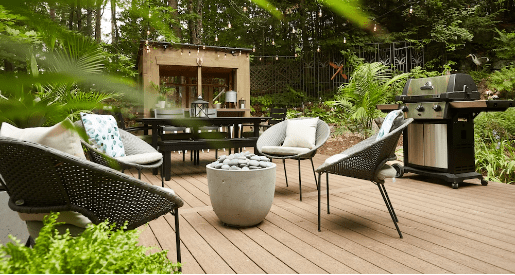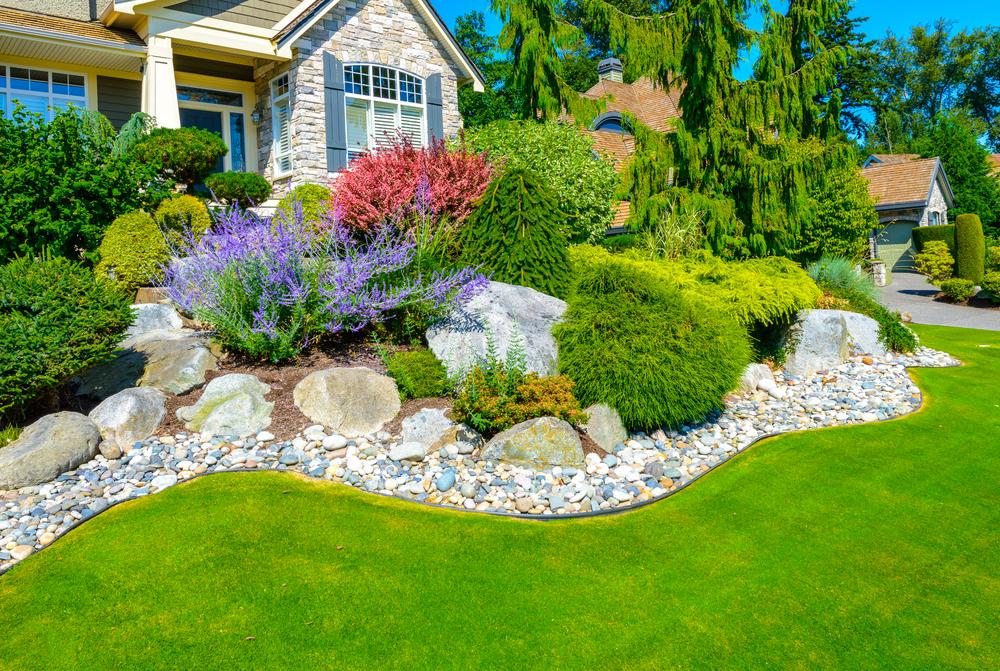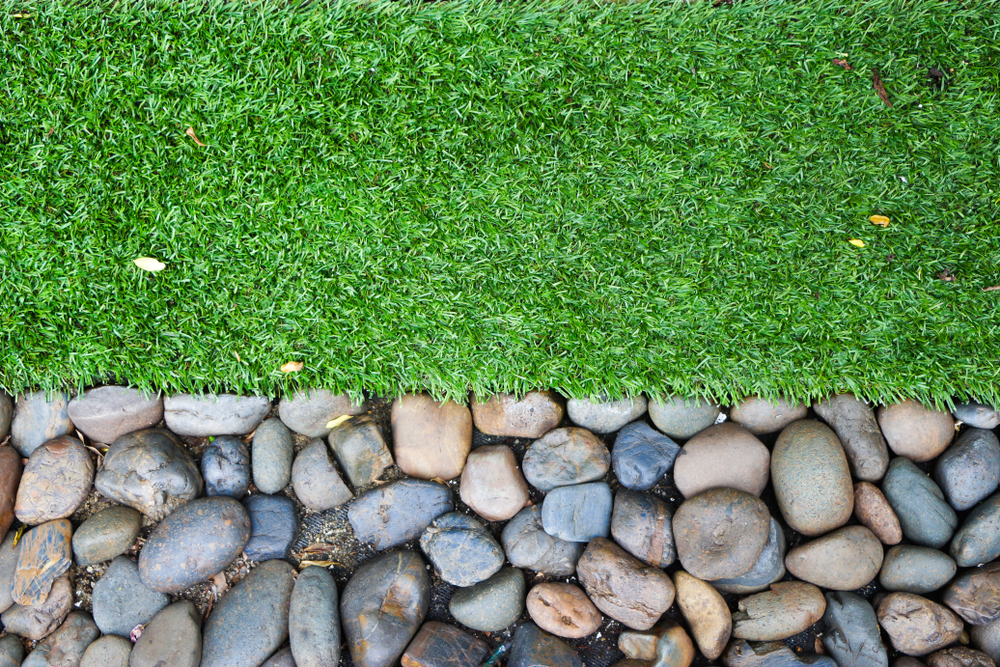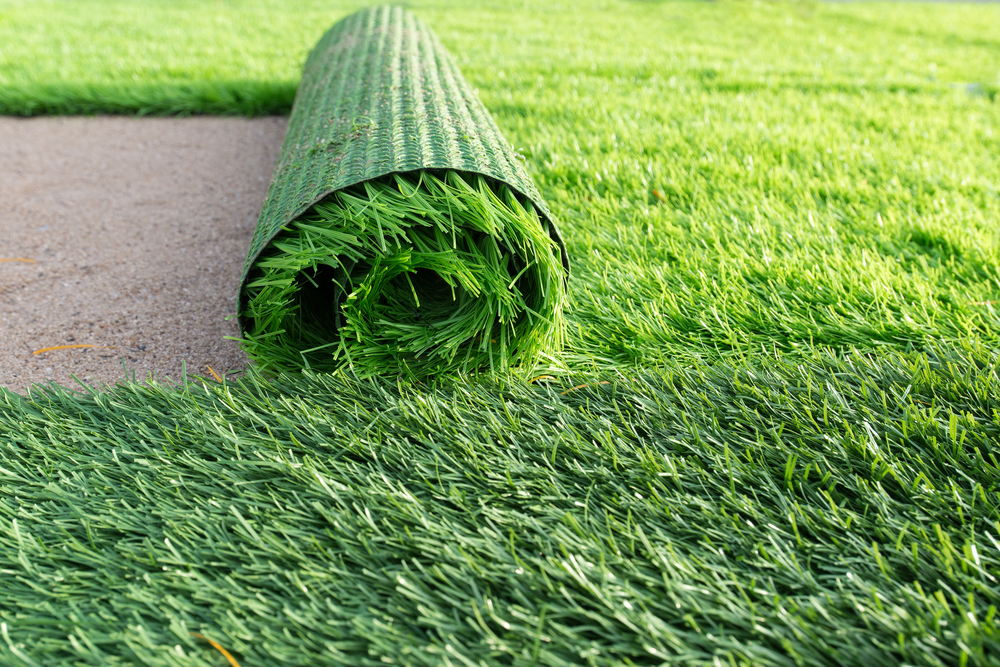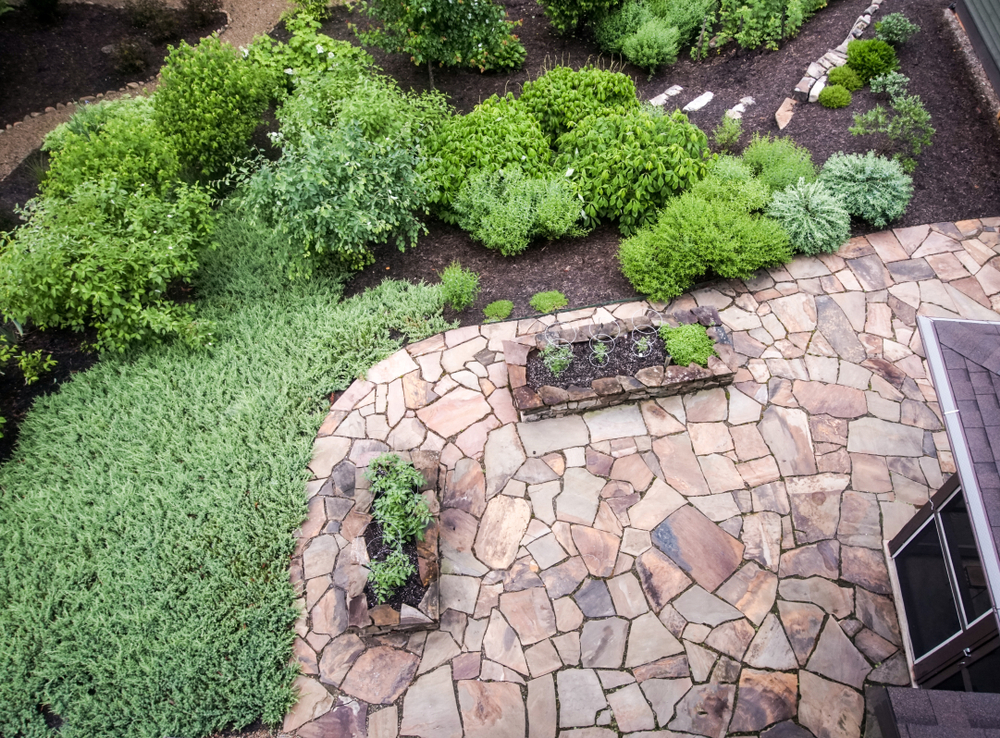 Rock Patio Ideas and Their Pros and Cons
Rock Patio Ideas and Their Pros and Cons
Landscaping your home means more than just picking flowers and shrubs. One of the most important elements of any backyard is landscape rocks because they provide functionality, drainage, and a safe path for you and your family. The key to choosing the right rocks to match the patio ideas for your landscape is knowing your options. This article will walk you through the most common types of landscaping rocks and why each could benefit you.
Pea Gravel
Known for its small round size, pea gravel is a popular choice for those looking for inexpensive patio material. While the size may vary, most stones come in sizes ranging from 1/8 inch to 3/8 inch. Since this is loose gravel, it can be poured to fill an area of the exact shape and size you want. Pea gravel is also available in a wide range of gray, blue, brown, beige, white and green. Pea gravel provides excellent drainage, making it popular for those looking for an affordable, low-maintenance patio.
It is comfortable to walk on with bare feet, thanks to their small and rounded shape. Pea gravel exhibits a wide range of creativity and use. It can pair well with other landscaping materials to form a spectacular element in your patio. The stones will keep weeds from growing when they are in a layer about 4 inches thick. The pros of these rocks are that the gravel tends to move, spread, or sink over time, and you may need to keep filling or raking it. Clearing debris and snow removal can be a big challenge when you have a pea gravel patio.
Decomposed Granite for Patio Ideas
Decomposed granite forms naturally from granite exposed to air. It is inexpensive and available in a wide variety of colors. Once installed, it will give you a hard and stable surface while retaining the ability to absorb water. Loose granite will also spread easily. Not only does it turn to dust before long, but it also spreads and migrates out of your driveway area. This can lead to ruts, bare spots, and puddles developing in your driveway.
The biggest downside to decayed granite is that it tends to stick to shoes, not something we want in the gravel on the patio. While it doesn’t require as much maintenance as the others, it will require occasional refills and redressing.
Marble Chips
Marble chips are another option that many people use as patio gravel. It looks quite attractive and does not take long to settle on a stable footing. In addition, it does not require frequent recharging and is available in different colors and qualities. The downside to marble chips is that they are more expensive, depending on what type you get, and it’s not that easy to create patterns that you might see with crushed stone. It also collects dirt and is difficult to clean, so it does require some maintenance. It can also create puddles when it rains because water does not pass through it easily.
Flagstone
Flagstone is durable. As long as you take good care of it and no accidents happen, the slab can last for centuries. The stone is easy to install. You don’t need to cut the stone to fit corners and crevices, and you don’t need to mortar it. Flagstone can be installed stone by stone and even beginners can achieve a great look with a DIY project. The stone needs to be put together, but the overall look is very forgiving due to the natural edges, so you don’t need to get exact matches and even spacing.
Flagstone withstands extreme climate. You don’t have to worry about the stone expanding or contracting as the temperatures bounce from one extreme to the other. Flagstone will not crack or change position due to temperature changes.
The stone is easy to maintain. You don’t have to do anything paving to keep it in good condition except sweep or spray it. If stains, such as mold are found, you can remove them with a mixture of bleach and water. If you happen to recover a broken stone, for example, from an accident, you can easily replace it by lifting the broken stone and placing a new one.
Although the slab is technically easy to install, the installation is labor-intensive and time-consuming. The stones are quite heavy, so you better be prepared to sweat a bit or pay someone to do the installation for you. You will also spend time putting the stones together in a way that you will find enjoyable. Flagstone can withstand extreme temperatures, but it is not immune to them. Flagstone can get extremely hot in the sun, and it can get very slippery in the rain.
River Rock Patio Ideas
River rock is like the big brother of gravel. It is also generally smooth but larger. They also have more distinction in color in general. You can buy river rocks in different colors: white, black, brown or a mix.
Sometimes they also have a marble-like appearance. Although smooth, the sizes vary enough that they are not that great on the feet. River rock is one of the most popular landscape rocks used by landscape architects due to its color versatility. Here are several benefits of using river rock in your landscaping, but one of the first is that maintenance is so easy.
There is virtually no maintenance once you install the rocks. If they get dirty and you want to water them with a garden hose, you can do that. Many people don’t even bother to do this, as a little dirt makes it look more natural anyway.
One of the many uses of river rock is to encourage drainage. Because the round stones do not fit as tightly together as other materials, water can flow through cracks between the stones. This means that your landscaping project will let rainwater return to the ground and help prevent the destructive flooding that can come from other, less-porous surfaces.
Although these decorative rocks are commonly found in garden supply stores, they are expensive. For this reason, they are usually sold in rather small bags and are not often used to cover large areas. Of course, there are exceptions to this, and if you have the cash to spend, you can go ahead and use it for your patio ideas.

